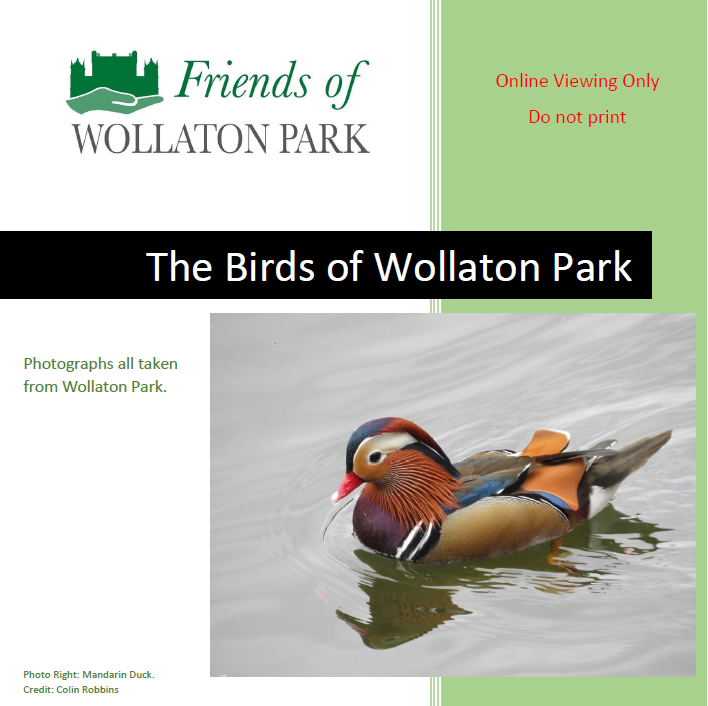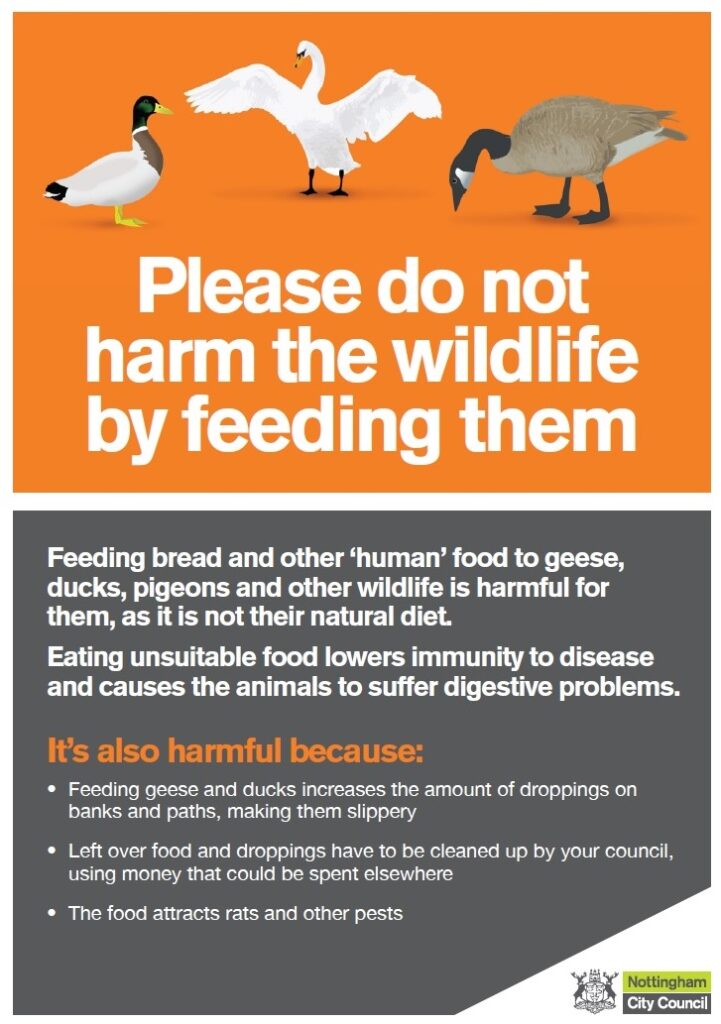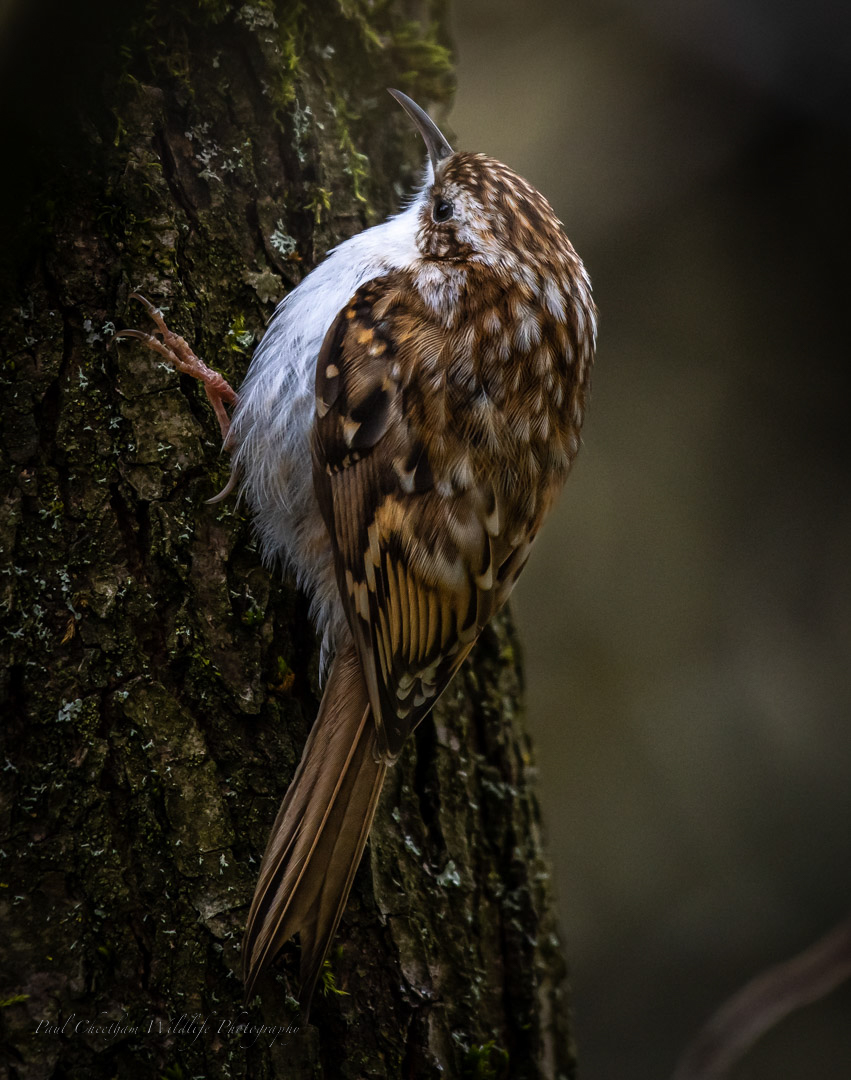Wollaton Park is home to over 70 species of wild birds. You’ll find both resident birds that stay in the park year-round and migratory visitors that pass through. A list of the commonly spotted birds is provided below.

Download our album to see a picture of most birds, along with the date each one was photographed.
(Updated October 2025)
Birdwatching in Wollaton Park
Author: Ian Hall.
Wollaton Park provides green space within the city of Nottingham, with varied habitat for bird watching. Whilst it does not attract the number of rarities of other nearby sites such as Attenborough Nature Reserve, it has a good range of the commoner garden and parkland birds, and there is always the chance of something less frequent. The best sites for bird watching are the lake, which holds a large heronry on the island, and the quieter parts of the various woodland areas. Given the large number of visitors, particularly on weekends or when special events are taking place, if you are interested in seeing more birds it is worth trying to visit at quieter times: early mornings are best.
Seasonal highlights…
Winter
Perhaps the most impressive sight and sound of winter comes from the large Corvid roost. Up to several thousand crows, jackdaws and rooks congregate in the park to roost, and can usually be found on the open land between the Hall and the lake, and in the trees near the Parkside entrance. Crows and jackdaws are resident in the park during the day, but many more come in to join the roost, whereas the rooks usually only fly in to roost overnight.
Recently, an increasingly large flock of parakeets also roosts in the park, often in trees by the lake, with 20-30 birds often present.
Winter is the best time to see gulls in Wollaton Park; in the late afternoon many gulls use the lake as a staging post on the way to roosting sites on gravel pits and reservoirs to the west. A visit around an hour before sunset gives the largest numbers when several hundred birds can be present. There is often also a group of goosander on the lake, and there is always a chance of seeing less common water birds such as goldeneye.
Cold weather can drive some birds away, in particular when the lake is fully frozen. Cold weather also brings in more redwing and a few fieldfares looking for food.
The alder trees by the lake often hold one or more flocks of siskins, especially in late winter, when up to 100 birds can be seen on some days.
By March, the redwings start to congregate in large groups preparing to migrate north to their breeding grounds: the area around the entrance to the golf course is good for this sight, and often one can hear the sound of their calling from the trees as they prepare to migrate.
Early signs of spring happen as soon as January, with the first herons establishing nests and a few robins and blackbirds singing. By early March many birds are singing, and the first heron chicks will be visible in the nests in the heronry. Egyptian geese are one of the first of the other water birds to breed, and often will there will be a large brood of goslings by early March. On a warm sunny morning, one can also often hear the sounds of drumming woodpeckers.
Spring
By April the young herons are getting increasingly noisy, and by early May the first brood start to leave the nests. Many pairs of herons will have a second brood however, and so the sight and sound of breeding herons lasts well into the summer.
One pleasure of spring is watching out for the first summer visitors. Sand martins usually appear first, often by late March, with the first swallow usually around mid-April, house martins a little later, and swifts around 1st May. The best place to look for these birds is over the lake in the early morning or evening, when birds on passage will stop off to feed on insects before continuing on their way north.
The first warbler to arrive is the chiffchaff, which can usually be heard by mid-late March, followed by willow warblers and blackcaps. Garden warbler and reed warblers arrive a little later. The reed bed on the lake usually holds 2-3 pairs of breeding reed warblers.
Wollaton Park gets very few wading birds because of the lack of suitable habitat and high levels of people and dog activity around the lake. However, a small number of common sandpipers pass through every year in the spring and autumn, again the most likely time to see one being early morning.
On a fine day it is worth looking up to the skies, particularly from the top gf the hill where the Hall stands, to search for migrating birds of prey. Buzzards and sparrowhawks are quite common. I keep searching for migrating osprey or other rarer raptors, but so far have failed to see one from the park, although it is highly likely they do pass over from time to time.
Summer
Summer can seem quiet from a bird watching perspective, partly because of the difficulty in seeing birds in the trees due to the dense foliage. The dawn chorus has faded for the year. As summer progresses, the ducks on the lake lose their breeding plumage and instead develop their drab ‘eclipse’ plumage, which can make distinguishing between species more difficult.
A lot of juvenile birds can however be seen, in particular on the lake where there will be young coots and moorhens, with a few ducklings, goslings and usually cygnets from the breeding pair of mute swans on the lake. Numbers of cygnets are very variable from year to year; usually 2-3 are present but in some years up to 8 can be seen. Great crested grebe also usually breed successfully.
In summer 2023 a pair of common terns took up residence on the lake and attempted to nest on one of the floating islands, but their attempt was unsuccessful, possibly because of predation.
A rare but enjoyable sight is to see a hobby hawking for dragonflies…again the lake is the best place, but they are rare; Attenborough nature reserve is a much better place to see these birds.
Late summer sees other less common visitors passing through. It is probably the best time to find a kingfisher on the lake, and little egret and cormorant are most frequent at this time of year, although little egret are becoming frequent throughout the year as their numbers increase in the county.
Autumn
Autumn sees the summer visitors leaving and the first of the winter visitors arriving. Swifts have usually gone by late August, but swallows, sand martins and house martins will stay until late September or into October. Autumn is also usually the best time to see other rarer visitors passage visitors to the park such as spotted flycatcher.
Larger falls of migrants do occur occasionally, when the weather conditions are correct. These are less spectacular than in better known sites, but even so it is nice to have a morning when the shrubs seem full of chiffchaff and willow warbler on their way south for the winter.
The first redwings can usually be heard flying over by early October, with fieldfares usually a little later arriving. On rare occasions, overhead one can also see large flocks of migrating wildfowl heading to their wintering grounds in East Anglia; pinkfooted geese and whooper swans being the most likely species to see.
Mixed flocks of tits congregate from early autumn and can be seen feeding their way through the trees at various places in the park.
As autumn progresses the corvid roost builds in numbers again. Wildfowl numbers build on the lake, with the birds coming out of eclipse plumage into the brighter colours of their breeding plumage. Shoveler, pochard and gadwall are much commoner than in the summer, and there are often a few teal and red crested pochard present as well.
By December the first robins will start singing, heralding the start of a new year.

Wollaton Park Bird List
The following list of birds commonly found in the park has been kindly compiled by Ian Hall. The nomenclature is based on the British Ornithologists’ Union British Bird List.
Key: (W) – Winter visitor; (S) – Summer visitor.
- Canada goose
- Greylag goose
- Mute swan
- Egyptian goose
- Mandarin
- Shoveler
- Gadwall
- Mallard
- Teal
- Red crested pochard
- Pochard
- Tufted duck
- Goosander
- Swift
- Rock dove/feral pigeon
- Stock dove
- Wood pigeon
- Moorhen
- Coot
- Little grebe
- Great crested grebe
- Black headed gull
- Common gull
- Herring gull
- Lesser black backed gull
- Common tern (S)
- Cormorant
- Grey heron
- Little egret
- Buzzard
- Tawny owl
- Greater spotted woodpecker
- Green woodpecker
- Kestrel
- Sparrowhawk
- Peregrine falcon
- Ring necked parakeet
- Jay
- Magpie
- Jackdaw
- Rook
- Carrion crow
- Coal tit
- Blue tit
- Great tit
- Sand martin (S)
- Swallow (S)
- House Martin (S)
- Long tailed tit
- Willow warbler (S)
- Chiffchaff (S)
- Reed warbler (S)
- Blackcap (S)
- Garden warbler (S)
- Goldcrest
- Wren
- Nuthatch
- Treecreeper
- Starling
- Mistle thrush
- Song thrush
- Fieldfare (W)
- Redwing (W)
- Robin
- Dunnock
- Grey wagtail
- Pied wagtail
- Chaffinch
- Greenfinch
- Goldfinch
- Siskin (W)

Sightings in the Lake
The Wetland Bird Survey maintain a list of bird sightings in the lake. Species covered in the survey include:
- Black-headed gull
- Coot
- Mallard
- Canada goose
- Tufted duck
- Common gull
- Gadwall
- Moorhen
- Shoveler
- Grey heron
- Pochard
- Mute swan
- Goosander
- Red-crested pochard
- Egyptian goose
- Mandarin duck
- Teal
- Great crested grebe
- Cormorant
- Lesser black-backed gull
- Wigeon
- Greylag goose
- Goldeneye
- Little grebe
- Little egret
- Herring gull
- Common tern
Dawn Chorus
These fantastic bird sounds were heard during Dawn Chorus 2023…
Reed Warbler, Wren and Woodpigeon
Wren, Reed Warbler, Blackcap, Woodpecker, Crow, Woodpigeon
Blackcap, Great Tit, Chiffchaff, Wren, Jackdaw, Blackbird, Robin


